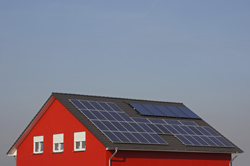Modernising photovoltaic surfaces
The huge market for such an alternative makes the issue not only aesthetic but inherently financial for those entering the market from the outset. The ‘Improved building integration of PV by using thin film modules in CIS technology’ (BIPV-CIS) project was undertaken to address this need by applying CIS thin film technology (referring to the three elements used: copper, indium and selenium) to develop façade and roof elements incorporating PV modules that blend in with the building’s original materials and design. The researchers evaluated patterned, matte and coloured architectural glasses for both aesthetics and usability in CIS thin film modules. The team also investigated European building regulations concerning dimensions and construction methods that often prohibit the use of standard PV modules in building integration. The investigators developed PV roof tiles and façade elements adapted to the visual appearance of conventional architecture. They installed CIS modules outdoors at four locations in Europe and successfully tested one PV façade according to façade standards for water and air tightness. In summary, the EU-funded BIPV-CIS project team produced new technology and procedures for integrating solar panels into pre-existing buildings such that they blend naturally with the architecture. Given the push for increased use of alternative energy forms together with the fact that the majority of buildings seeking PV modules are older ones, the BIPV-CIS project outcomes have the potential to significantly impact the European economy and, of course, bring many Europeans one step closer to independence from fossil fuels.







